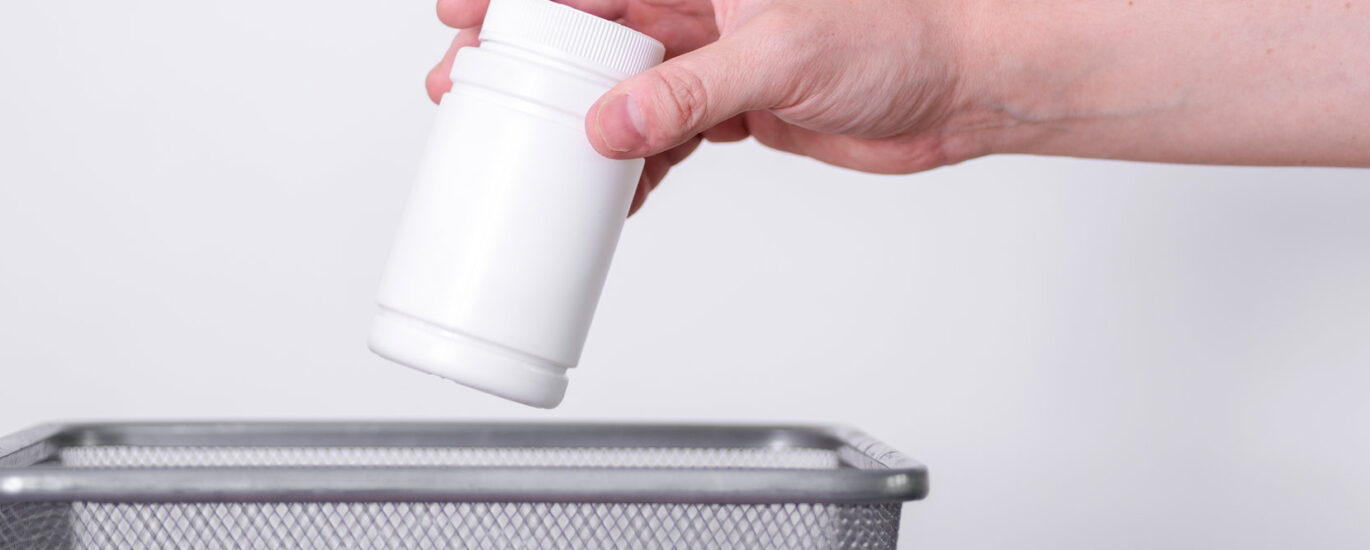


Your Complete Circle Of Style, Wellness, And Inspiration.

Most people have a few bottles of old or unused medicines scattered around their homes. But these prescription and over-the-counter drugs are more than just clutter. Taken by mistake, they can cause serious problems.
Fortunately, it’s easy to safely get rid of medicines you no longer use or that are past their expiration date. Through safe and secure drug disposal, you can protect yourself, your family, your community and the environment.
It’s the right time to dispose of a medicine when:
It might be tempting to keep some unused pills around “just in case.” But older medicine kept as a backup is often less effective than drugs that have been recently purchased or dispensed.
When you’re ready to toss out your old medicine, start by checking the label, box or other information that it came with. You can usually find instructions on how to dispose of it safely.
Otherwise, depending on where you are and what medicine you’re throwing out, you have three options:
If you’re not sure what to do with your particular medicine, your pharmacist can also help with advice.
No, just follow the same instructions as you would with solid medicine: Use a drop-off box or bring it to a drug take-back event. If that’s not an option, throw it out along with something unpleasant so that it’s not consumed. And don’t flush it or pour it down the sink unless it’s on the FDA flush list.
Sharps, like needles and syringes, need to be disposed of properly to protect you, your family and sanitation workers. Fortunately, it’s easy:
There are many secure places in Minnesota, western Wisconsin and around the country where you can safely dispose of old and unused medicines.
You can find drop-off boxes (also called medication recycling locations) at hospitals across the state, including the below in the Twin Cities area:
You can also contact your county for more information about drop-off boxes and take-back events near you:
If you live in greater Minnesota, you can also use the Minnesota Pollution Control Agency drop-off site tool to find a collection location near you.
Hospitals with secure drop-off boxes include:
You can also find out more about drop-off boxes and take-back events near you by contacting your county:
For more about take-back locations and events in your area, check out the FDA’s information on drug take-back locations, as well as information from the U.S. Drug Enforcement Administration on Take Back Day and finding year-round medicine drop-off locations near you.
When old and unused drugs aren’t disposed of properly, they have the potential to cause all kinds of problems. Inside your home, they can cause accidental poisoning. And outside, they can contribute to substance use and environmental damage.
When medicines are past their use-by date, they’re not as effective as they were when they first left the pharmacy. Over time, medicine can even become unsafe to use. Safe disposal helps ensure you’re using medicine that’s at full power to keep you healthy.
Also, the clutter of old and unused drugs can mix in with your new medicines, increasing the chances of taking the wrong one by mistake. By regularly taking stock of the medicines you have and removing the ones you don’t need, you can keep yourself safe.
Accidental poisoning from unused and old medicines can also put your family at risk, especially if you have young children in your home. According to the FDA, medicine accidents involving children ages 6 and under are responsible for around 60,000 emergency room visits and 450,000 calls to poison centers each year.
Pets can also find and tear apart containers of unused medicine, and eating what’s inside can be fatal. By disposing of medicine that’s too old to be useful, you can reduce the risk of it being found and taken by accident.
In the wrong hands, many medicines can be misused – especially controlled substances like prescription painkillers. Substance use is often perpetuated by finding unused medicines from family and friends, as well as by finding pills that weren’t properly thrown away. Proper drug disposal helps decrease the chances that unneeded medicines are used dangerously.
When medicines that aren’t on the FDA flush list are sent down the sink or through the toilet, they have the potential to cause serious damage to the environment.
Most treatment plants can’t remove prescription drugs from city water, causing them to return to the water supply. There, they can pollute the environment and harm the health of fish, frogs and other wildlife. And they can potentially make their way back to drinking water facilities, too. In addition, antibiotics that find their way into waterways and groundwater can change how bacteria grow in nature. This can potentially lead to the development of bacteria strains that can’t be treated by antibiotics.
Keep in mind that if you’re not able to bring medicines like opioids and narcotics to a take-back site, they’ll need to be flushed to protect people from harm. The benefits of fast and thorough disposal of these drugs outweigh any potential harm to the environment. But before you flush medicines like painkillers and other controlled substances, double check to make sure they’re on the FDA flush list.